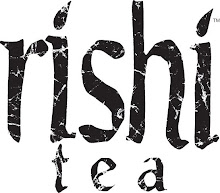High mountain tea is often called by its Chinese name, Gao Shan Cha, and is a category of special oolong teas, the best of which are from Taiwan.
 |
The high mountain tea garden a few hundred meters above the famous "horse saddle" garden in Shan Lin Xi is one of our favorite origins of Taiwan Oolong. |
People like the complex flowery aromas and fresh character of high mountain tea. High mountain oolongs contain less catechin and more amino acids than other oolongs so they are smoother and less astringent than other types of oolong. High mountain teas are in short supply every year. The oolong market demand for the best grades of high mountain tea is greater than the supply, always.
High mountain teas are classified as teas grown higher than 1000 meters above sea level. Many of our Taiwan teas come from middle and lower elevations, as well. Many oolongs are not high-mountain grown and their characters are very sought after and yield distinctive characters that oolong tea consumers look for. For example, many of our teas are from 500-800 meters above sea level, like Jade Oolong and Tae Guan Yin. One of our best quality oolongs, Eastern Beauty, or Hsinchu Bai Hao, is grown at 300-500 meters and this tea can only be made at lower elevations, once per year.
This year we have three high mountain spring teas: one from Shan Lin Xi, one from Li Shan, and High Mountain Dong Ding made in A-Li Shan. We also have two other teas listed below from lower elevations, including our two new Qingxin oolongs: original spring orchid and light baking type.
 |
| The qingxin organic tea farm is bordered by nets and large, unpruned Hong Yue tea trees that create buffer zones to surround the tea garden and minimize windshift from non-organic agriculture. |
High mountain tealeaves grow at a slower rate than the tea cultivated in the medium- and low-growing elevations, due to the cool, humid and misty conditions that shroud the tea fields and filter direct sunlight. Leaves stay tender and immature during the harvest so the leaves are rich in amino acids and theanine and have a lower content of sharp catechin. High mountain teas, or Gao Shan Cha, are priced for their strength and richness without any bitterness or astringency.
 | ||||
| Pheremone light traps, an organic method of pest management are used to minimize bug attacks on the tea bushes in our qingxin tea farm. |
The highest mountain regions in Taiwan for Gao Shan Cha are Da Yu Lin, Li Shan, Shan Lin Xi and A-Li Shan. There are many others. Each season, we taste Gao Shan Cha from all the best farms and select a chosen few, twice a year, when the high mountain teas are harvested. Most high mountain teas are harvested during the spring and winter, although sometimes the conditions are poor and we can only get one harvest a year. Spring tea is noted for its youthful freshness and bright, rich character, and is very balanced among body, flavor, amino acid taste and feeling and aroma. Winter teas accumulate and expend energy through the year and are noted more for their distinctive and complex aromas and strong qi that experts claim the tea bush builds up all year and releases in winter before dormancy.
The weather conditions in high elevations provide low temperatures and ample humidity during harvesting and processing, so many fresh attributes are preserved in the tealeaves, such as aromatic oils, active water and amino acids. The tea bush varietals that grow in the high mountain gardens are mainly Qingxin oolong, which is the type of tea bush that is best suited to high mountain conditions. Qingxin is noted for its high amino acid content, rich taste, patience in brewing and low astringency and bitterness. The high mountain oolongs made with the Qingxin oolong varietal command the highest price in the Taiwan market.
 |
| Electric powered, bamboo roasting baskets are used to create the distinctive nutty aroma and smooth flavor of our 4 x baking, high mountain Dong Ding. |
High mountain oolong tea is best prepared with a guywan or gong fu teapot to enjoy multiple infusions. High mountain teas are also one of the best teas for Hario cold brew pots, using 4-5 tablespoons of tea per liter of cold water. Put in your fridge for 13-16 hours and drink the next day. All of our Taiwan oolong teas can be cold brewed according to this method.


1 comment:
Very informative article. I love the aroma and taste of Oolong Teas. It makes me relaxed and have a calming effect specially when I am at the office.
Post a Comment